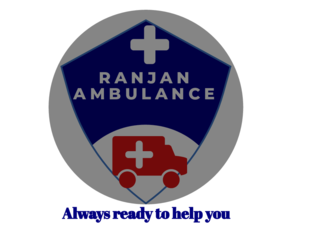Ambulance Service in Arwal: Facilitating Critical Healthcare Access
Located in the eastern part of Bihar, India, Arwal district is known for its predominantly rural landscape and agricultural economy. Access to healthcare services, particularly emergency medical assistance, plays a crucial role in addressing the healthcare needs of its population. This article explores the significance, infrastructure, challenges, and impact of ambulance services in Arwal district.
Healthcare Landscape in Arwal
Arwal district, bordered by the districts of Jehanabad to the north, Gaya to the south, and the river Sone to the east, faces typical challenges of rural healthcare infrastructure in India. The district hosts a network of primary health centers (PHCs), community health centers (CHCs), and a district hospital to cater to the healthcare needs of its residents. However, given the predominantly rural nature of the district, accessibility to healthcare facilities can be limited, particularly during emergencies.
Importance of Ambulance Services
Ambulance services in Arwal district are vital for several reasons:
Geographical Challenges: Arwal’s rural terrain and scattered population make it challenging for residents to access timely medical care, especially during emergencies. Ambulance services bridge this gap by providing swift transportation to healthcare facilities.
Emergency Medical Response: Quick access to medical transportation is crucial for emergencies such as accidents, childbirth complications, heart attacks, and other critical conditions. Ambulance services ensure that patients receive prompt medical attention, significantly improving their chances of survival and recovery.
Healthcare Equity: Ambulance services promote equity in healthcare access by ensuring that even residents in remote villages have access to emergency medical transport, irrespective of their socioeconomic status.
Types of Ambulance Services Available
In Arwal district, ambulance services typically fall into two categories:
Basic Life Support (BLS) Ambulances: These ambulances are equipped to provide essential medical care during transportation. They are staffed with trained paramedics capable of administering first aid, oxygen, and CPR if necessary.
Advanced Life Support (ALS) Ambulances: ALS ambulances are equipped with advanced medical equipment such as cardiac monitors, ventilators, and medications. They are staffed with paramedics or emergency medical technicians (EMTs) trained to provide critical care en route to healthcare facilities.
Infrastructure and Operation
The infrastructure supporting ambulance services in Arwal includes:
Ambulance Fleet: Managed by both government health departments and private healthcare providers, the ambulance fleet comprises vehicles suitable for navigating rural roads and tailored to the district’s geographic and demographic needs.
Emergency Response Centers: These centers serve as communication hubs, receiving emergency calls and dispatching ambulances based on the nature and severity of the medical emergency.
Coordination with Healthcare Facilities: Ambulance services in Arwal are closely coordinated with local hospitals, PHCs, and CHCs to ensure seamless transfer of patients for further medical treatment upon arrival.
Challenges and Solutions
Despite their critical role, ambulance services in Arwal district face several challenges:
Infrastructure Limitations: Poor road conditions during monsoon season can hinder the timely arrival of ambulances in remote areas. Efforts are ongoing to improve road infrastructure to facilitate faster ambulance access.
Awareness and Accessibility: Public awareness about how and when to access ambulance services during emergencies remains a challenge. Community education programs are essential to increase awareness and encourage timely intervention.
Funding and Sustainability: Ensuring sustainable funding for ambulance services and maintaining the fleet in good operational condition are ongoing challenges. Public-private partnerships and government initiatives are crucial for addressing these issues.
To address these challenges, initiatives include:
Improving Road Connectivity: Collaborative efforts between local authorities and healthcare providers to maintain and improve road infrastructure, especially during adverse weather conditions.
Community Engagement Programs: Conducting outreach programs to educate residents about the importance of early medical intervention and how to access ambulance services promptly.
Capacity Building: Training more paramedics and EMTs to handle advanced medical equipment and provide specialized care during transit.
Impact on Healthcare Outcomes
Efficient ambulance services in Arwal district have a significant impact on healthcare outcomes:
Reduced Mortality Rates: Timely access to medical care through ambulance services helps reduce mortality rates associated with critical conditions and accidents.
Improved Maternal and Child Health: Prompt transportation during childbirth emergencies contributes to reducing maternal and neonatal mortality, enhancing overall health outcomes.
Enhanced Emergency Preparedness: Strengthening emergency response capabilities improves healthcare preparedness across the district, ensuring better outcomes for residents.
Future Directions
Looking forward, enhancing ambulance services in Arwal district involves:
Technology Integration: Incorporating GPS tracking systems and telemedicine capabilities to improve response times and enhance pre-hospital care.
Public-Private Partnerships: Collaborating with private healthcare providers to expand the ambulance fleet and improve service coverage in remote areas.
Policy and Governance: Implementing effective policies and governance frameworks to ensure sustainable funding and operational efficiency of ambulance services.
Conclusion
Ambulance services in Arwal district are pivotal in bridging the gap between medical emergencies and life-saving care, particularly in rural and remote areas. As the district continues to develop, so too must its healthcare infrastructure, with ambulance services playing a crucial role in ensuring that every resident has access to timely and effective emergency medical assistance. Through ongoing improvements, community engagement, and technological advancements, Arwal district is poised to enhance its emergency response capabilities and improve healthcare outcomes for its population.

